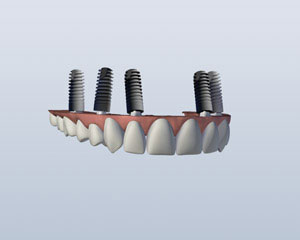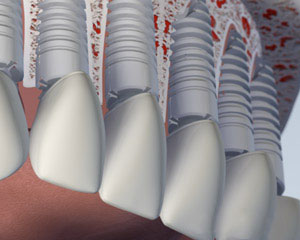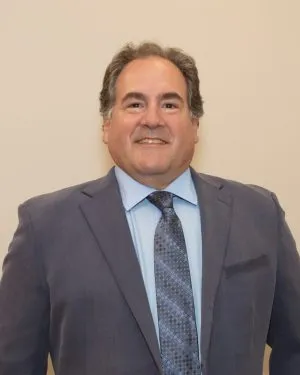Restoring Confidence When All Teeth Are Missing
Patients who are missing all of their upper or lower teeth have several reliable implant-based treatment options. These solutions provide improved stability, chewing efficiency, and long-term comfort compared to traditional dentures.
Our surgeons will evaluate your bone structure, lifestyle needs, and health status to recommend the most appropriate treatment plan.
One option is to have two implants placed in your lower jaw and a denture made that snaps onto these implants. This option allows your lower denture to be more stable while chewing than without implants. However, there will still be movement of your lower denture, and sore spots will occur if any food particles, especially seeds, are caught under it. As with all removable replacement teeth, you still will need periodic appointments for denture adjustment.
One option is to have two implants placed in your lower jaw and a denture made that snaps onto these implants. This option allows your lower denture to be more stable while chewing than without implants. However, there will still be movement of your lower denture, and sore spots will occur if any food particles, especially seeds, are caught under it. As with all removable replacement teeth, you still will need periodic appointments for denture adjustment.
A third option involves placing five or more implants in your jaw and attaching a permanent denture. Your denture is held in place by screws or clasps that secure it to the support posts or bar. It doesn’t touch the gum tissue, which allows you to clean under the denture without removing it. This denture will replace all your missing lower teeth and will not be removed except at maintenance visits. Although cleaning under your denture without removing it is more time consuming and requires more dexterity, many patients who want a permanent denture prefer this option.
The final option is to have all your teeth individually replaced so that they will appear to be growing out of your gum tissue and will most closely resemble the appearance of your natural teeth. This option usually requires eight or more implants. Separate abutments or support posts for each one of these implants will be made and crowns for each missing tooth will be placed. The teeth are often joined together for sinus grafting to replace bone height, strength, and support. Overall, this is the most costly option, because it requires the most implants and individual replacement tooth fabrication. Your replacement options may also be limited by the current size and shape of your jawbone.
A similar range of treatment options is also available for your upper jaw. However, because the bone is not as hard as that in the lower jaw, people often need more implants to support their new replacement teeth. Depending upon the number of implants to be placed, it may be possible to eliminate the need for covering the roof of your mouth with a complete denture. This option allows you to fully taste your food and gives you a better sense of its temperature. Your denture will feel more natural. You will still have a removable denture, which makes cleaning the support bar and denture much easier.
Depending upon the number of implants to be placed, it may be possible to eliminate the need for covering the roof of your mouth with a complete denture. This option allows you to fully taste your food and gives you a better sense of its temperature. Your denture will feel more natural. You will still have a removable denture, which makes cleaning the support bar and denture much easier.

If you want a restoration that is similar to your natural teeth and therefore not removable, you probably will need eight to ten individual implants placed. This is followed after healing by the placement of the abutments and new replacement crowns.

Our team will assess:

Dr. Nalley moved to Grand Haven, MI at 9 years of age after his father was stationed here by the U.S. Coast Guard. This has been his hometown ever since. He graduated from Grand Haven High School. His undergraduate studies were completed at Hope College in Holland, MI. He received his dental training at the University of Michigan where he received the Chalmers J Lyons Award which is given to the top oral surgery student of the graduating dental class.
He then completed his residency in Oral and Maxillofacial Surgery at The Detroit Medical Center (DMC) / Wayne State Medical School. In addition to his time spent treating patients, Dr. Nalley has also been very involved in various surgical organizations and committees.
He is a member of the Michigan Society of Oral and Maxillofacial Surgeons and was past president of the Great Lakes Society of Oral and Maxillofacial Surgeons. He is board certified by the American Board of Oral and Maxillofacial Surgeons and The National Dental Board of Anesthesiology. He is also a fellow of the American Association of Oral and Maxillofacial Surgery.